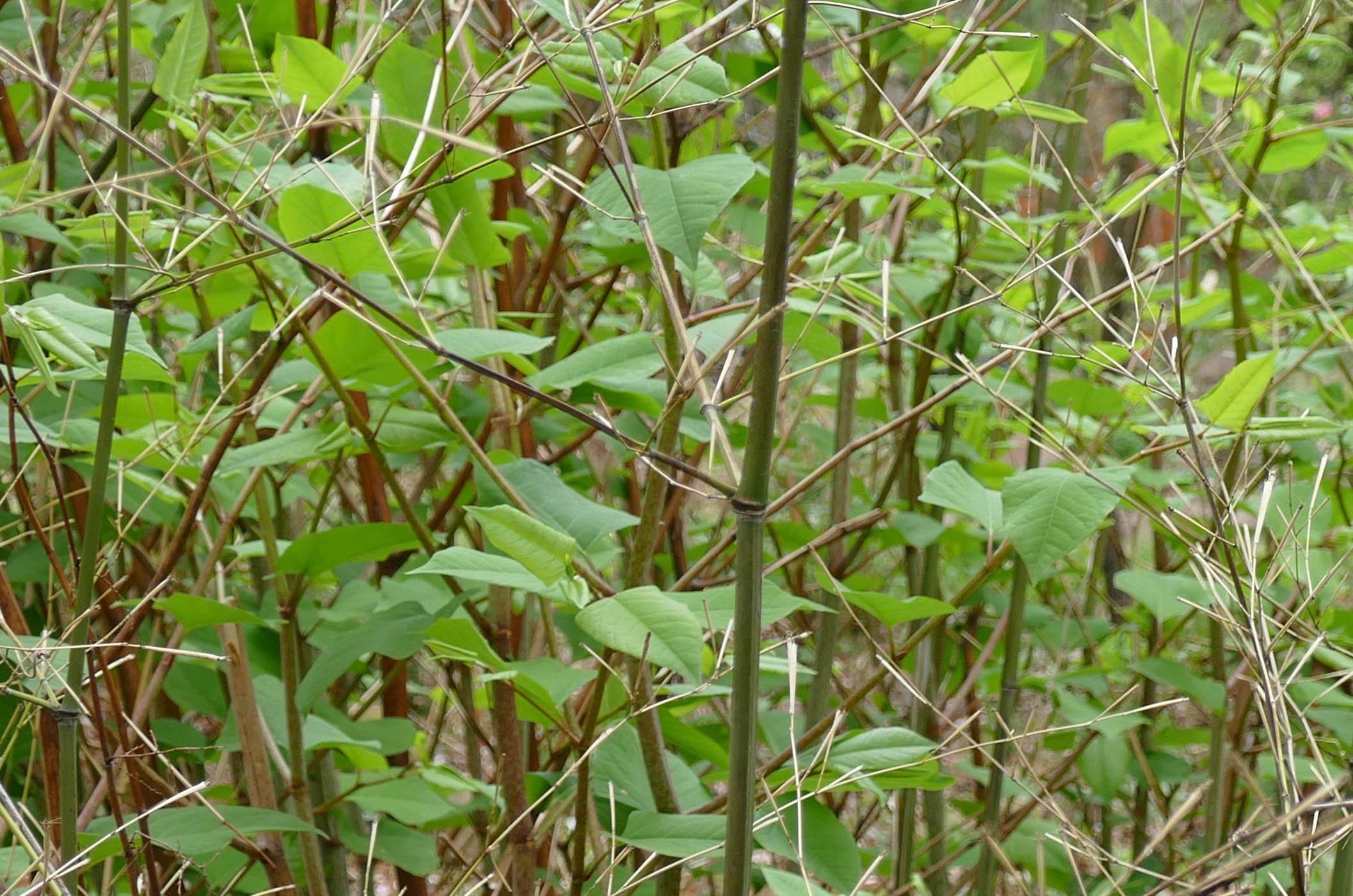
Japanese Knotweed
We have a new (death) star in Beverly Shores. Japanese knotweed is listed by the World Conservation Union as one of the world's 100 worst invasive species. Newsweek describes the monster: “Growing up to 6.5 feet tall and 65 feet wide due to its tireless and unstoppable army of unseen roots, knotweed spreads out underground and forces its way up through every crack imaginable, in patios, concrete paths, and even in walls and floors.” Once you've got knotweed, it is nearly impossible to eradicate.
Knotweed flowers, late summer
Knotweed overwhelming bamboo
Large stand of knotweed
-
Knotweed has stems that look like bamboo and large (5 inch across) heart-shaped leaves with pointed tips. It has numerous, small ivory flowers in spikes at stem ends.
-
Japanese knotweed likes sun, so you are most like to find it along roads and stream or marsh banks and on the edges of woodlands. But once established, it will expand by its long rhizomes into shaded areas.
-
According to the Michigan DNR, “Knotweed forms dense monocultures, with a thick layer of accumulated leaf and fibrous stem litter. A number of mechanisms contribute to its ability to exclude native species; light limitation, alteration in nutrient cycling and allelopathy—the ability to suppress growth of a potential plant competitor by releasing toxic or inhibiting chemicals.” Knotweed is prohibited in Michigan.
-
Patience: Eradication will take several years and ongoing treatment. Don't mow—mowing just encourages knotweed to spread. It will require treatment year after year with glyphosate (RoundUp). You can weaken it with foliar spraying throughout the growing season, but the most effective treatment consists of painting cut stems with concentrated Roundup in August, when the flowers begin to appear.

